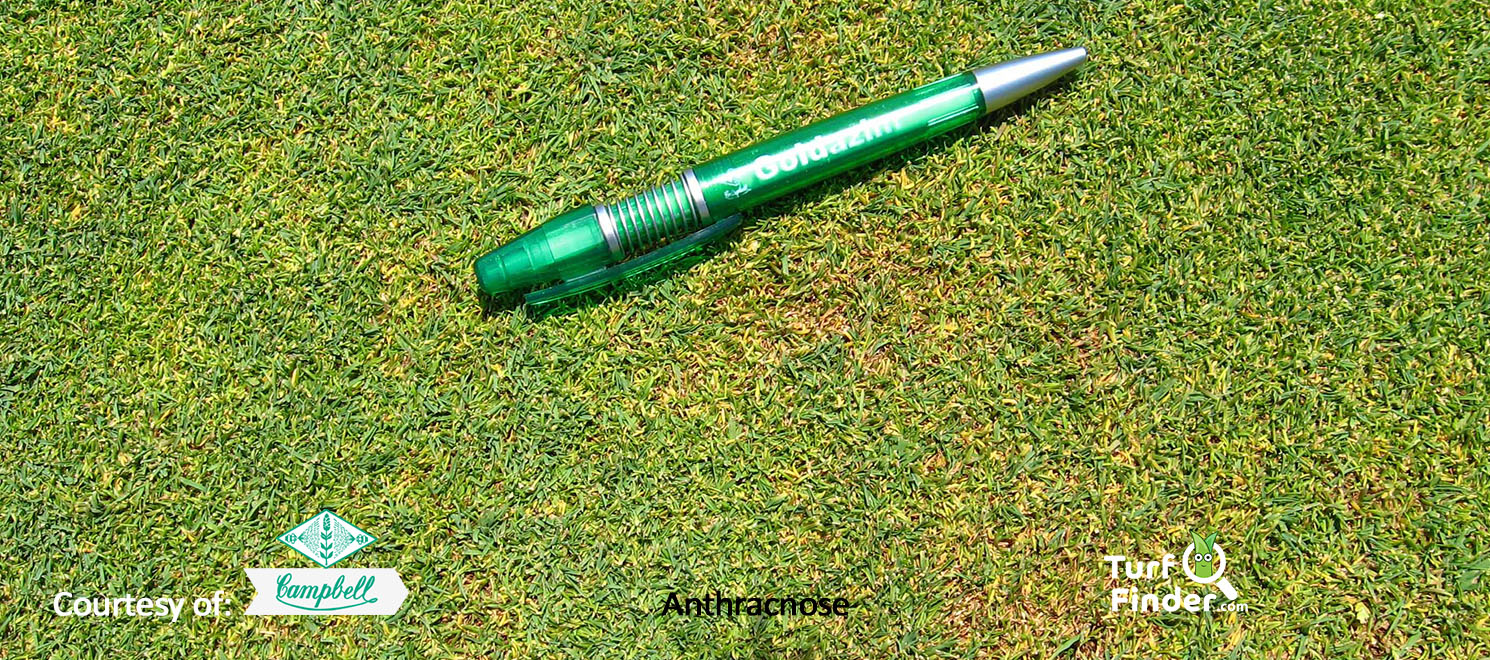
Other common names:
Not applicable.
Description:
Colletotrichum graminicola (Ces.) Wilson (telemorph Glomerella graminicola Politis) and Microdochium bolleyi (Sprague) de Hoog & Hermanides-Nijhof cause anthracnose diseases in turfgrasses (Smiley, 1893). Colletotrichum graminicola is the most common pathogen responsible for causing anthracnose diseases in turf. Often anthracnose will be observed as a foliar blight, in which the turfgrass leaves are noticeably infected appearing either yellow with possible red lesions. Depending on the severity of the disease and environmental conditions, the disease also has the ability to significantly affect the turf plants crown and root system. Anthracnose is seen within certain warm- and cool-season turfgrass species.
Lifecycle: “The causal fungus, survives the winter as dormant resting structures in infected plant debris. During early spring outbreaks of anthracnose basal rot, the fungus, which may have overwintered in the plant, initiates infection at the base of the plant. Outbreaks of anthracnose foliar blight and/or basal rot can result when spores produced in acervuli are dispersed by splashing water or tracked by mowing equipment from one area to another. These spores then germinate and cause new infections on other plants. Anthracnose is likely to occur when plants are growing slowly (during periods of hot and cold temperatures), during overcast periods, and in high humidity conditions (PSU, 2013).”
Susceptible Turf:
Warm-and cool-season turfgrasses. Anthracnose is found within eastern states of Australia, particularly in temperate regions.
Symptoms:
Anthracnose favours average daily temperatures over 25°C and is a significant problem during spring through to autumn. Anthracnose diseases are stress-induced. Physiological stress from any source greatly encourages the development and spread of the disease. Depending on the severity of the disease outbreak, symptoms can range from single tillers with yellow or red lesions to the typical 50 to75 mm irregular yellow-bronze shaped thin/bare patches. These patches can be numerous and join together in severe outbreaks. Numerous black fruiting bodies (acervuli) of the fungus can be seen on the foliage as the disease progresses. The acervuli have black spines (setae) producing from them (Vargas, 1994). The fruiting bodies which resemble small, black pin cushions can be seen with a magnifying glass or small microscope.
Control options:
References:
Disclaimer:
Turf Finder or its developer accepts with no responsibility for any consequences whatsoever resulting from the use of any information or product(s) listed herein. Products are to be applied as per label instructions.